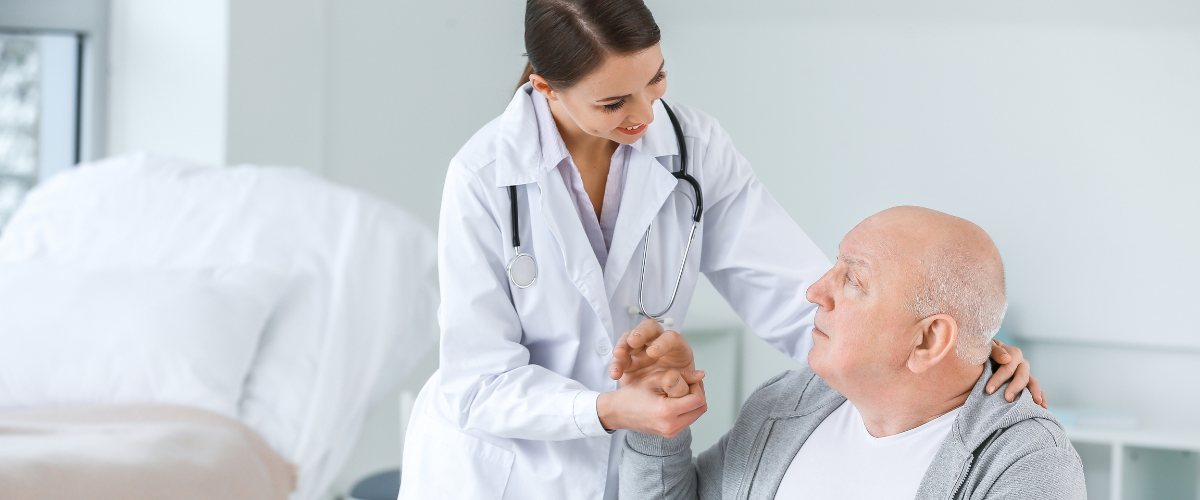April is Parkinson’s Awareness Month. Nearly 1 million people in the U.S. have Parkinson’s disease, with 90,000 new cases diagnosed each year. Most Parkinson’s patients (96 percent) are over 50; more men than women are affected.
Common symptoms include:
- Hand tremors that impede fine-motor tasks, such as eating or writing.
- Stiff or rigid muscles.
- Poor balance.
- Difficulty walking.
- Trouble speaking, swallowing, and/or showing facial expression.
These are only the obvious, “motor” symptoms, however. “Nonmotor” symptoms are also common, and include:
- Loss of smell and taste.
- Incontinence.
- Anxiety/depression.
- Fatigue.
- Insomnia.
- Pain in arms and/or legs.
- Cognitive impairment.
- Shortened life expectancy, due to increased injury risk and changes in the immune system. (Note: headache, chest pains, or fever should never be brushed off as “just another Parkinson’s symptom”—almost always, they indicate a different problem.)

Treatment
The standard Parkinson’s medicine is levodopa, a central-nervous-system agent that increases the brain’s dopamine. Levodopa is usually taken with carbidopa, an anti-nausea medication.
Like most medicines, levodopa can be a subject of misinformation. It’s important to understand that:
- Medication is a treatment, not a cure. At present, there is no known cure for Parkinson’s disease.
- Levodopa can have side effects such as drowsiness, dizziness, or sore throat. However, there’s no truth to the rumor that it can actually worsen Parkinson’s symptoms.
- As with any medicine, levodopa should be used according to prescription. Don’t let anyone but your doctor tell you to take more or fewer pills, or to increase the time between doses.
Not all Parkinson’s treatments involve medication. Deep brain stimulation (DBS) has helped many people with motor symptoms. DBS is the neurological equivalent of a pacemaker: both use electric stimulation to keep a vital organ running smoothly.
Other factors known to improve quality of life and reduce symptoms:
- Regular exercise. (Consult your doctor first: where motor functions are impaired, a personalized plan is vital.)
- Proper nutrition.
- Consistent bedtimes and getting-up times.
- A fulfilling social life.
- Stress management.
- A positive attitude.
Assistive Technology
Of course, assistive technology (AT) is invaluable for people with Parkinson’s disease. Here are a few technologies that our clients and contacts have found useful:
- Smartwatches with apps to monitor symptoms.
- Touchscreen styli (styluses).
- PopSockets, which stick to smartphone cases and give the user something extra to grip.
- Weighted eating utensils.
- Utensil handles with built-in, computerized stabilizers that can compensate for hand tremor. A pioneer in this area is Liftware Steady, capable of reducing tremor effects up to 70 percent. Liftware has been endorsed by the Michael J. Fox Foundation for Parkinson’s Research.
- The Obi self-feeder robot, which uses a switch-operated system to help users guide food to their mouths.
- Augmentative and alternative communication (AAC) apps that can be programmed to speak in the user’s own voice. (Look into this technology—or make high-quality voice recordings—right after a Parkinson’s diagnosis. If speech is affected, the natural voice may weaken and make programming harder.)
- Anything that helps with task management or cognitive function.
Thanks to Dr. Anita Swanson, from the University of Texas TTAP program, for helping us collect AT recommendations. And remember that April 30 is National Assistive Technology Awareness Day!

